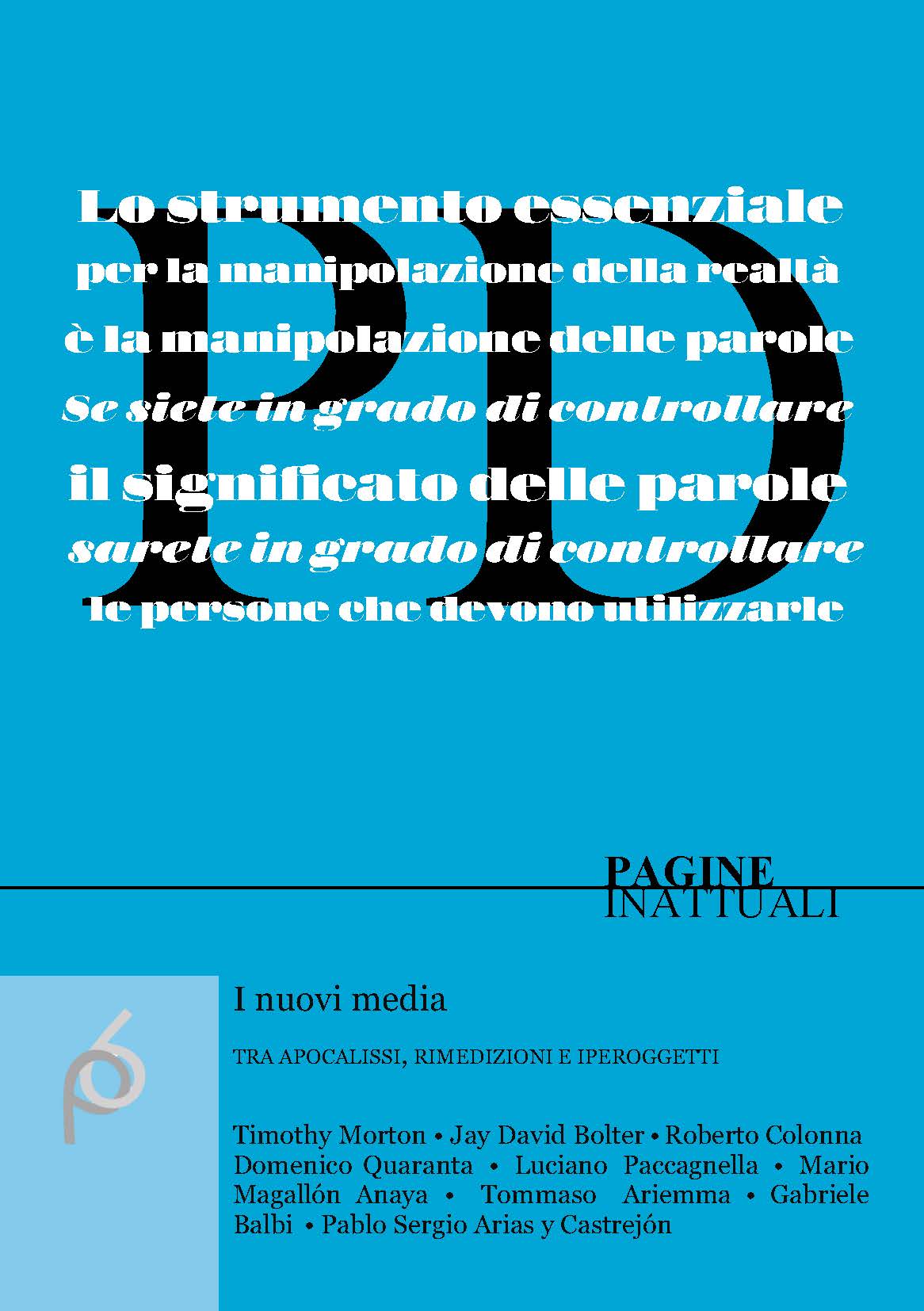On the Dystopian Utopia of the Image
DOI:
https://doi.org/10.6093/2280-4110/11354Keywords:
Dystopian Utopia of the Image, Digital Humanities, New Media, Images, Internet, Screens, HybridisationAbstract
In these first twenty years of the XXI Century, the hybridization between real and virtual has undergone a significant acceleration whose effects - being a process still in progress - have not yet fully unfolded. This epochal transformation has betrayed the libertarian logic that the first theorists of the Net had proposed, and has imposed a socio-economic model based on the consumption of goods and men which has assumed the appearance of a contradictory utopia. A utopia that becomes a dystopia because it aims not to improve society but to affirm an simplification which impoverishes the processes of transmission of culture through an innovative use of images, that can exploit the potential expressed by the artifacts of contemporary technology. The dystopian utopia of the image has in fact three closely interconnected cornerstones: the images, the screens that project them and the Internet that disseminates them. This complex architecture is aimed at data management which data has become for this reason one of the most sought-after raw materials in current modernity.
Downloads
Downloads
Published
How to Cite
Issue
Section
License
Pagine Inattuali is published with open access, to ensure the widest possible diffusion and circulation of knowledge examined by the scientific community.
All published material is distributed under the "Creative Commons - Attribuzione" (CC-BY 4.0).
With the CC-BY license, the authors retain the copyright on their contributions, however guaranteeing anyone the possibility of downloading, reusing, reprinting and distributing the published materials, with the sole condition that the author and the original location are correctly cited publication.


